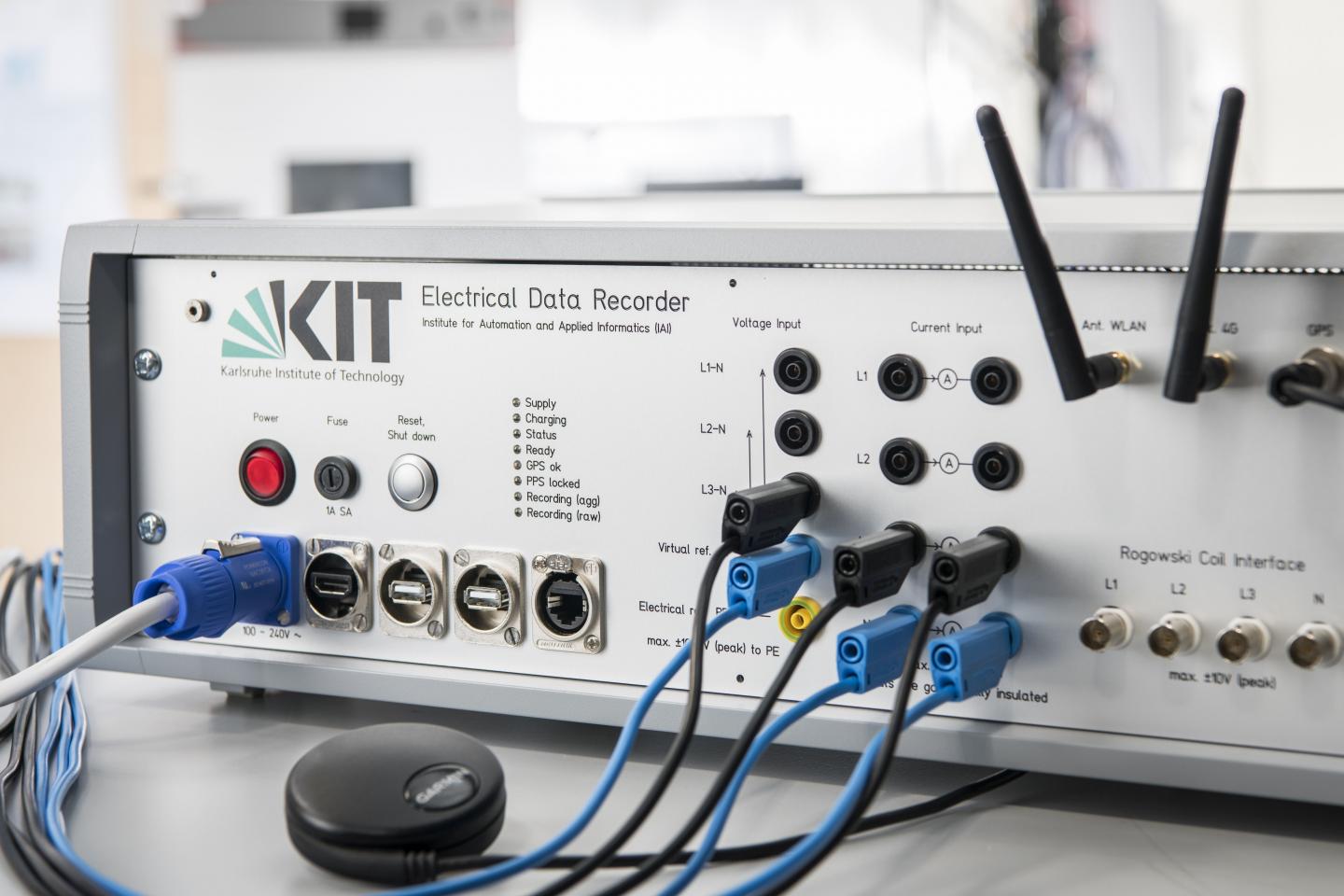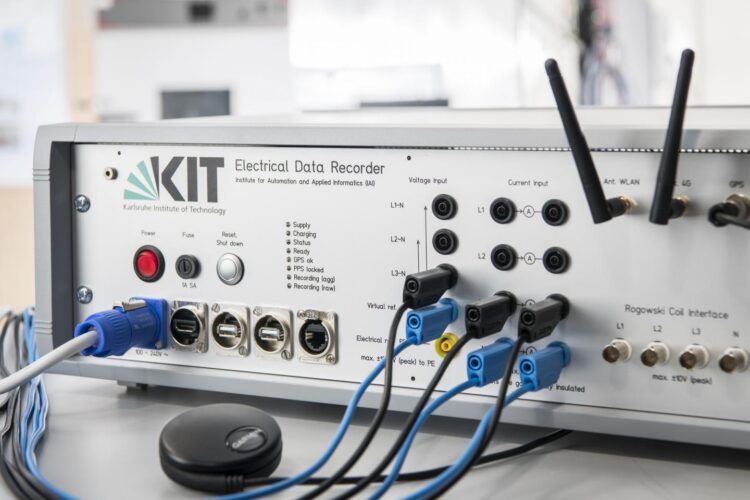Research consortium studies fluctuation in synchronous grid areas — data recorder developed by kit used for measurements on three continents — publication in Nature Communications

Credit: Amadeus Bramsiepe, KIT
In the renewable energies era, grid frequency will be an increasingly important indicator of stability of power supply. Under the direction of the Helmholtz Association, an interdisciplinary research consortium has analyzed frequency fluctuations in twelve synchronous grid areas on three continents. For data recording, scientists of Karlsruhe Institute of Technology (KIT) have developed a portable, GPS-synchronized recorder based on a new measurement technology. First results have now been published in Nature Communications. (DOI: 10.1038/s41467-020-19732-7)
Grid frequency and its fluctuations provide researchers of various disciplines with important information on the power grid. In particular, they reveal whether and to what an extent the grid is stable, i.e. whether supply and demand are balanced. Such data also allow conclusions with respect to effects of disturbances and breakdowns or the influence of power supplied from renewable energy sources. International experts in the areas of mathematics, physics, and engineering measured frequency data in Europe, the USA, and Africa and studied them in detail.
Electrical Data Recorder: Frequency Data of High Resolution
For this big measurement campaign of about 430 days, a research team of KIT’s Institute for Automation and Applied Informatics (IAI) developed a novel electrical data recorder (EDR) and provided the measurement teams with a device each. The EDR uses a GPS receiver for time synchronization and enables recording of raw and frequency data with very high resolution. The device is portable and can transmit raw data via a secure VPN tunnel directly to the “Large Scale Data Facility” of KIT’s Steinbuch Centre for Computing, where they are further processed for research purposes. “Our recorder has a high performance and is easy to handle,” says Dr. Heiko Maaß, IAI. To start measurements at a certain location, the EDR only needs to be plugged into a conventional power socket. If no Internet is available, data can be stored locally for several weeks.
The Bigger the Grid, the Higher Is Frequency Stability
For the collaborative research projects, the devices have meanwhile traveled halfway round the world. The 1.27 gigabytes of frequency data from the 50 Hertz or 60 Hertz range used for the publication in Nature Communications were measured at 17 stations in twelve different, synchronous grid areas from continental Europe to the US and South Africa to Iceland and the Faroe Islands. Comparison of the heterogenous areas reveals: In smaller grids, frequency fluctuations are far higher than in bigger ones. “The bigger the power grid, the more stable it is,” says Richard Jumar from IAI. “This finding confirms our previous assumptions that intensity of frequency fluctuations depends on the size of the grid. In particular, it confirms the underlying scaling law.”
The data produced by the EDR measurements will not only be used by the consortium, but also made available to the international community. “Our studies offer great potential – not only for the development of statistical models on frequency dynamics, but also later on for a better regulation of power supply that is increasingly based on volatile sources of energy,” says Professor Veit Hagenmeyer, Head of the IAI.
###
The study was directed by the Helmholtz Association (KIT and Forschungszentrum Jülich). Consortium partners are Queen Mary University in London, Technische Universität Dresden, and the University of Istanbul.
Original publication:
Leonardo Rydin Gorjão, Richard Jumar, Heiko Maass, Veit Hagenmeyer, G.Cigdem Yalcin, Johannes Kruse, Marc Timme, Christian Beck, Dirk Witthaut, and Benjamin Schäfer: Open data base analysis of scaling and spatio-temporal properties of power grid frequencies. Nature Communications, 2020. DOI: 10.1038/s41467-020-19732-7
https:/
Contact for this press release:
Martin Heidelberger, Press Officer, Phone: +49 721 608-41169, martin heidelberger?kit edu
Being “The Research University in the Helmholtz Association”, KIT creates and imparts knowledge for the society and the environment. It is the objective to make significant contributions to the global challenges in the fields of energy, mobility, and information. For this, about 9,300 employees cooperate in a broad range of disciplines in natural sciences, engineering sciences, economics, and the humanities and social sciences. KIT prepares its 24,400 students for responsible tasks in society, industry, and science by offering research-based study programs. Innovation efforts at KIT build a bridge between important scientific findings and their application for the benefit of society, economic prosperity, and the preservation of our natural basis of life. KIT is one of the German universities of excellence.
Media Contact
Monika Landgraf
[email protected]
Original Source
https:/
Related Journal Article
http://dx.





